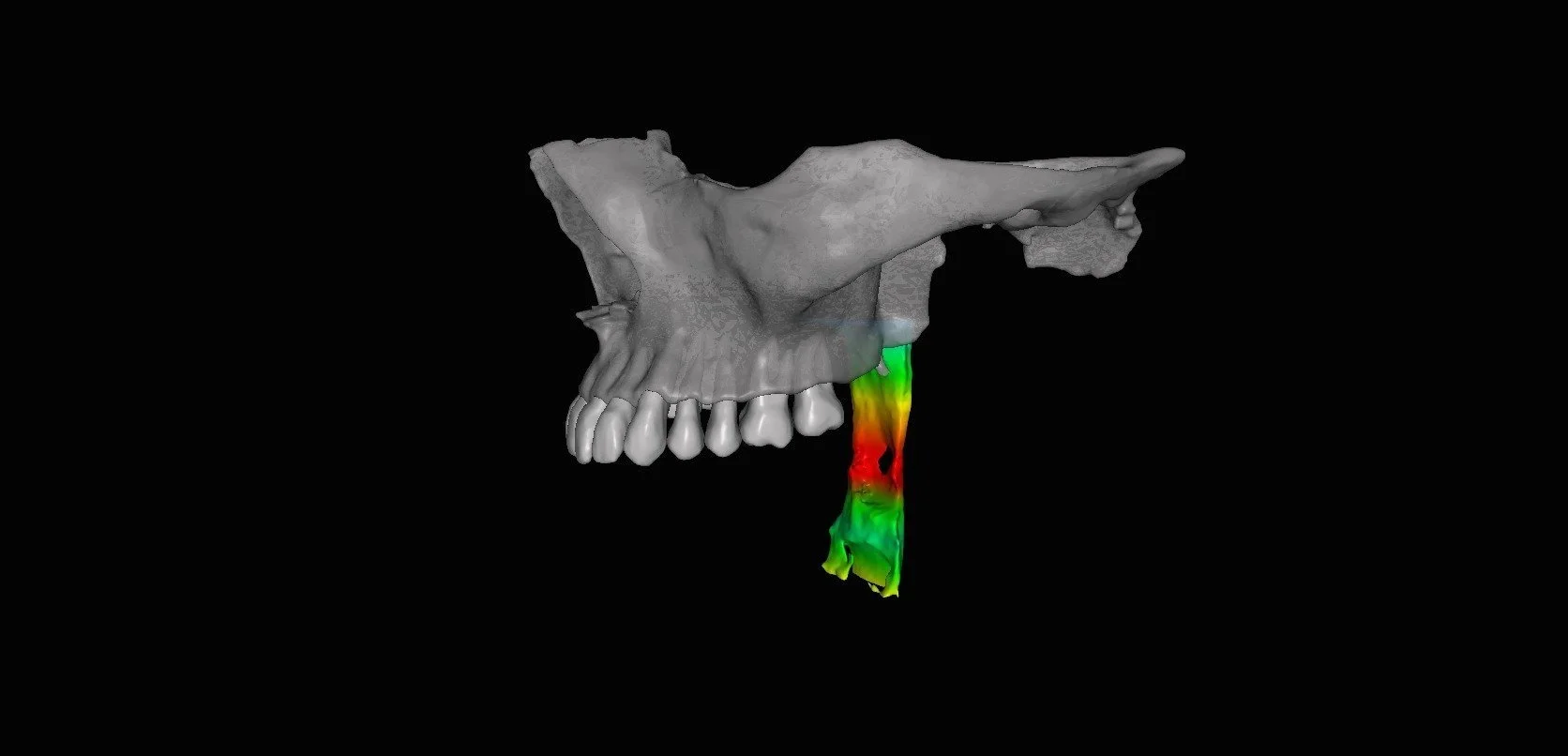The role of Cone - Beam CT in the evaluation of airway obstructions and obstructive sleep apnea.
Upper airway obstruction as viewed on CBCT data set.
Obstructive Sleep Apnea is a serious global problem due to the wide range of health issues it can cause, including cardiovascular disease and memory loss.. “Unfortunately, 2-dimensional imaging techniques yield insufficient data for a comprehensive diagnosis, given the complex anatomy of the airway. Three-dimensional (3D) imaging is favored as it more accurately represents the patient's airway structure. Although computed tomography and magnetic resonance imaging can depict the actual 3D airway architecture, their use is limited by factors such as high radiation dose and noise associated with the scan. A recent review of the literature indicates that CBCT is a low-radiation imaging technique that can be used to incidentally identify patients with OSA, thereby facilitating early referral and ultimately enhancing the accuracy of surgical outcome predictions.” 1.
If you or your patient is dealing with issues related to breathing, sleep apnea, or even snoring, understanding airway health is crucial. A valuable tool for a better understanding of the airways is an appropriately collimated Field of View (FOV) Cone Beam Computed Tomography (CBCT) scan to give your dentist or doctor a detailed look at your airways and surrounding structures.
Below are some reasons why a CBCT exam can be so valuable in evaluating airways:
1. Clear, dimensionally accurate 3D View of Your Airways - Unlike regular 2D radiographs, CBCT scans create a full three-dimensional image of your airway, giving a much clearer picture. This allows visualization of everything from sinuses, your nasal passages and airways in one detailed image, making it easier to detect any abnormalities.
2. Diagnosing Sleep Apnea - Sleep apnea is a common condition where your airway becomes blocked during sleep, causing breathing to stop and start throughout the night. A CBCT scan is a tool for identifying any areas where your airway might be narrowing or collapsing, helping your provider diagnose sleep apnea and plan effective treatments.
3. Helpful for Orthodontic and Surgical Planning - If you’re considering orthodontic treatment or jaw surgery, a CBCT scan can be incredibly useful. It shows how your teeth, jaws, and airway interact with each other. This information helps orthodontists and surgeons plan treatments that not only align your teeth and jaws but also improve your airway and overall breathing.
4. Measuring Airway Volume and Size - CBCT scans allow doctors to measure the size and volume of your airway. This can be especially helpful if you’ve had surgery or other treatments, as it lets your providers track changes and see if the treatment has improved your airway’s capacity.
5. Identifying Airway Issues -CBCT isn’t just for diagnosing sleep apnea. It’s also great for spotting other problems that could be affecting your airway, like enlarged tonsils, a deviated nasal septum, or even growths or cysts in the sinus cavities that might be blocking airflow.
6. Understanding Your Anatomy - Your unique anatomy plays a big role in your airway health. Things like the position of your jaw, the size of your tonsils, or even the placement of your tongue can affect how well you breathe. A CBCT scan treatment providers a full view of these structures, helping them understand what might be contributing to your breathing issues.
7. Lower Radiation Compared to Traditional CT Scans - One of the advantages of CBCT is that it uses a much lower dose of radiation than traditional CT scans, while still providing highly detailed images. This makes it a safer option for routine checks, especially if you need regular follow-ups.
8. Monitoring Treatment Progress - CBCT scans are also be used after treatments to see how well they’ve worked. Whether you’ve had jaw surgery, orthodontic treatment, or are using an oral appliance for sleep apnea, a follow-up scan can help doctors see if your airway has improved and if further steps are needed.
In summary, a Cone Beam CT scan can be an valuable tool for evaluating and understanding your airway health. Whether you’re dealing with sleep apnea, preparing for orthodontic treatment, or just want a clearer picture of what’s going on with your breathing, CBCT can provide detailed, low dose and effective imaging to assist in the guidance of your care. If you’re experiencing airway or breathing issues, our imaging center can help! Contact your dentist or doctor to learn if a CBCT scan could benefit you.
Isaac M, ElBeshlawy DM, ElSobki A, Ahmed DF, Kenawy SM. The role of cone-beam computed tomography in the radiographic evaluation of obstructive sleep apnea: A review article [Internet]. Vol. 53, Imaging Science in Dentistry. XMLink; 2023. p. 283. Available from: http://dx.doi.org/10.5624/isd.20230119

